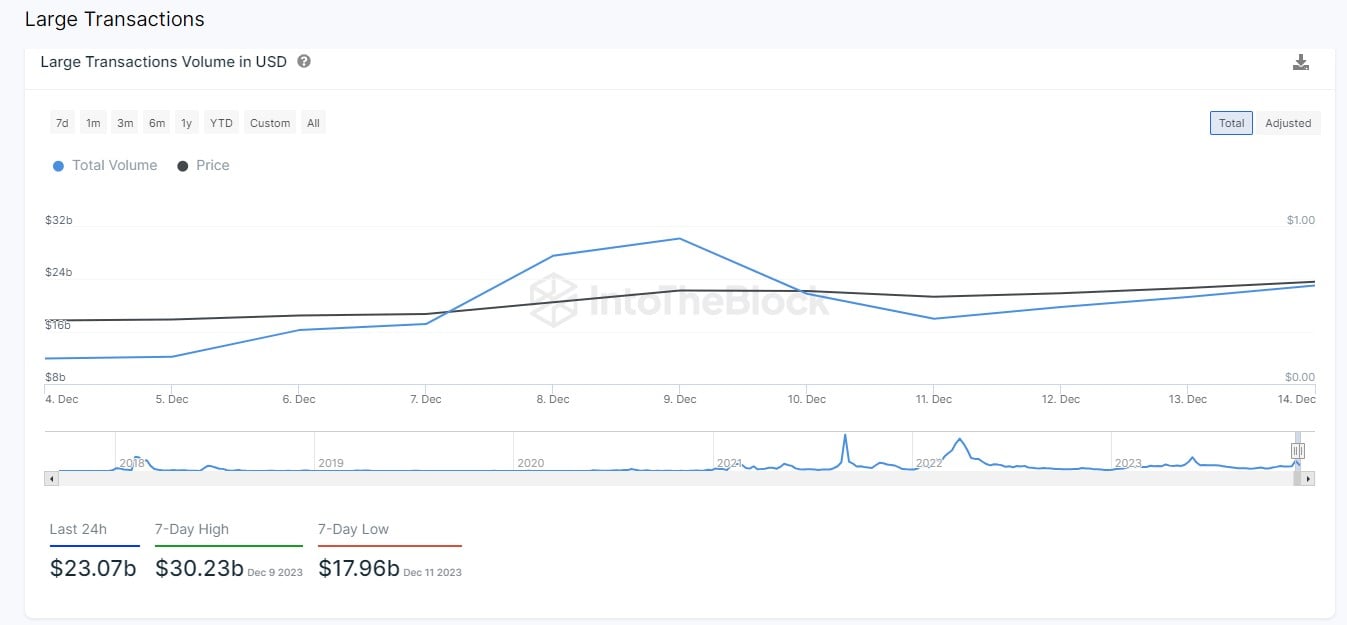Cardano (ADA) may be ranked as the eighth largest digital currency, but it wields enormous power in other areas too, including its on-chain whale transaction.
Cardano (ADA) and whale’s power play
According to data from crypto analytics platform IntoTheBlock (ITB), Cardano’s aggregated whale volume over the past 24 hours has topped $23.07 billion, after jumping 8.37%. This figure is next only after Bitcoin (BTC), whose large transaction volume was pegged at $33.45 billion within the same period.
 Cardano Whale Volume. Source: IntoTheBlock
Cardano Whale Volume. Source: IntoTheBlock
That market whales are all out for Cardano is no surprise, considering the massive developmental efforts being put into the protocol. Unlike Bitcoin and the other altcoin profiled in the top 10 largest coins by market cap, ADA is the second-cheapest token after Dogecoin (DOGE), underscoring its attractiveness as a viable investment option.
Per the ITB data, Cardano whale transactions have also seen a conservative uptick thus far this week. Large transactions, accounting for those valued at $100,000, were 10,070 as of Dec. 11. This figure rose to 13,140 as of Dec. 14.
It is quite uncommon to have many whales transacting on a network and even harder to maintain consistency over time. As of Nov. 15, the total number of whale transactions recorded on Cardano came in at 4,320, with a peak of 16,160 as of Nov. 9.
The Cardano whale action is well documented, with over $1.5 billion recorded on a single day earlier this week.
Implication for price
The Cardano whale action shows how much influence Cardano has in the broader Web3.0 ecosystem. The positive uptick in transaction count comes at a time when the digital currency is on a resurgence, with the price jumping 1.22% in the past 24 hours to $0.6269.
The expectation is that whale transactions can continually enhance sentiment on the market and help ADA on its resilience journey across the board.


 DogeHome
DogeHome TheCoinrise Media
TheCoinrise Media Thecoinrepublic.com
Thecoinrepublic.com TheCoinrise Media
TheCoinrise Media TheCoinrise Media
TheCoinrise Media Cryptopolitan_News
Cryptopolitan_News Coin Edition
Coin Edition BlockchainReporter
BlockchainReporter






















